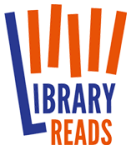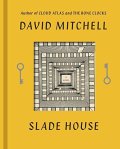Yes, “fantasy” is in the title twice on purpose. Some people have fantasy sports teams, other people have fantasy syllabi for YA lit courses. Apparently. It’s another Top Ten Tuesday from The Broke and the Bookish: Top Ten Books That Would Be On Your Syllabus If You Taught YA Fantasy 101. I start my list with some “older” texts, defined as books I read (or could have read) when I was growing up, then continue with “newer” texts, published more recently. Nearly all of these are trilogies or series or have companion books, so I’ve added some standalone titles at the end.
Older:
 A Wrinkle in Time by Madeleine L’Engle: misfit Meg Murry and her odd genius little brother, Charles Wallace; kindly, quirky Mrs. Whatsit, Mrs. Who, and Mrs. Which; the concept of tessering; CENTRAL Central Intelligence; a rescue mission…A Wrinkle in Time is one of the foundational texts of childhood.
A Wrinkle in Time by Madeleine L’Engle: misfit Meg Murry and her odd genius little brother, Charles Wallace; kindly, quirky Mrs. Whatsit, Mrs. Who, and Mrs. Which; the concept of tessering; CENTRAL Central Intelligence; a rescue mission…A Wrinkle in Time is one of the foundational texts of childhood.
The Lion, the Witch, and the Wardrobe by C.S. Lewis: If you somehow missed this, you’ve probably gleaned what you need to know from cultural references already: the four Pevensie children travel through the back of a wardrobe and enter the magical kingdom of Narnia, where the White Witch reigns over a Christmas-less winter; the children help Aslan the lion save the kingdom, and are made kings and queens. Little details from this book (the lamp post; Turkish delight) have stuck with me, and I especially loved finding out the origin of the wardrobe in The Magician’s Nephew, though I felt some of the middle books in the set were dull. And of course there’s the religious aspect. But what would it be like to read The Magicians by Lev Grossman (see below) without having read Narnia first?
 The Golden Compass by Philip Pullman: Lyra is one of the greatest female characters ever written: she’s fierce and courageous, loyal and a liar, a risk-taker who doesn’t give up, someone with a strong sense of right and wrong. But Pullman doesn’t stop with Lyra: there’s also Will, who shares many of Lyra’s qualities; the concept of daemons (a part of your soul that lives outside you in animal form) and multiple worlds; witches and gypsies and armored bears. The ending of the third book in the trilogy, The Amber Spyglass, was the first – and still one of the only – ending I ever read that I would describe as heartbreaking.
The Golden Compass by Philip Pullman: Lyra is one of the greatest female characters ever written: she’s fierce and courageous, loyal and a liar, a risk-taker who doesn’t give up, someone with a strong sense of right and wrong. But Pullman doesn’t stop with Lyra: there’s also Will, who shares many of Lyra’s qualities; the concept of daemons (a part of your soul that lives outside you in animal form) and multiple worlds; witches and gypsies and armored bears. The ending of the third book in the trilogy, The Amber Spyglass, was the first – and still one of the only – ending I ever read that I would describe as heartbreaking.
Alanna by Tamora Pierce: A perfect quartet of books for growing young feminists. Alanna disguises herself as a boy to become a knight, but this doesn’t preclude romance later in the series – and birth control is addressed! I didn’t read these when I should have (13? 15?), but I devoured them as an adult.
 The Lion Tamer’s Daughter by Peter Dickinson: Twins, doubles, doppelgangers, magicians, and mirrors come up again and again in fantasy and fairy tale, but this tale of Melanie and Melly Perrault has stuck with me for years.
The Lion Tamer’s Daughter by Peter Dickinson: Twins, doubles, doppelgangers, magicians, and mirrors come up again and again in fantasy and fairy tale, but this tale of Melanie and Melly Perrault has stuck with me for years.
The Princess Bride by William Goldman: Not technically YA, but there’s no reason not to include it on this “syllabus.” Everyone is familiar with the movie (right?? If you’re not, go and watch it, and come back when you are), and the book is just as good except there’s more: every character’s back story, and lots of humor, especially in the parentheticals and footnotes. Timeless and perfect.
Newer:
Harry Potter by J.K. Rowling: How was this not included on the Broke & Bookish list? Maybe it’s just assumed that everyone has read it already. Rowling’s world-building is superb, making readers long to enter Hogwarts School of Witchcraft and Wizardry, and she has created some incredibly kickass female characters, especially Prof. Minerva McGonagall, Hermione Granger, and Molly Weasley; Harry wouldn’t have lasted thirty seconds without these ladies on his side. There’s a good-vs.-evil faceoff in every book, but Rowling’s creativity never wanes.
 The Magicians by Lev Grossman: The Lion, the Witch, and the Wardrobe and Harry Potter should be prerequisites for this book, since Grossman draws so much from them, but he also creates something entirely original (and often quite dark; these are really adult books, ideal for more mature teens but not the twelve-year-old who just finished the Harry Potter books; also, main character Quentin is thirty in the third and final book, The Magician’s Land). Like the Pevensies, Quentin passes from the real world into the magical, but Brakebills is no Hogwarts, and Fillory is no Narnia.
The Magicians by Lev Grossman: The Lion, the Witch, and the Wardrobe and Harry Potter should be prerequisites for this book, since Grossman draws so much from them, but he also creates something entirely original (and often quite dark; these are really adult books, ideal for more mature teens but not the twelve-year-old who just finished the Harry Potter books; also, main character Quentin is thirty in the third and final book, The Magician’s Land). Like the Pevensies, Quentin passes from the real world into the magical, but Brakebills is no Hogwarts, and Fillory is no Narnia.
Graceling by Kristin Cashore: My favorite recent discovery, Graceling blends some of the best aspects from The Golden Compass and Alanna: world-building, a dangerous journey, and a fierce heroine – Katsa – who remains just as strong when she joins forces with another Graceling, Po.
 Neil Gaiman: It’s hard to decide on a starting point, but reading something by Neil Gaiman would definitely be a requirement for this syllabus – his short story-turned-picture book Instructions, his adult novel The Ocean at the End of the Lane, his middle grade/YA books Coraline and The Graveyard Book, his older adult novels American Gods and Neverwhere, or one of his short story collections – the recent Trigger Warning was superb. He has a masterful grasp of myth and magic, and draws on this knowledge and understanding to create powerful, dark, creative works that seem timeless.
Neil Gaiman: It’s hard to decide on a starting point, but reading something by Neil Gaiman would definitely be a requirement for this syllabus – his short story-turned-picture book Instructions, his adult novel The Ocean at the End of the Lane, his middle grade/YA books Coraline and The Graveyard Book, his older adult novels American Gods and Neverwhere, or one of his short story collections – the recent Trigger Warning was superb. He has a masterful grasp of myth and magic, and draws on this knowledge and understanding to create powerful, dark, creative works that seem timeless.
The Raven Boys by Maggie Stiefvater: The Raven Cycle is 3/4 complete as of this blog post, but I’m confident in Stiefvater’s imagination and skill. (For those who prefer a standalone, however, The Scorpio Races is fantastic: a tough young woman trying to keep her family together attempts to win prize money by capturing and riding one of the savage water horses in the annual – and frequently deadly – race on the beach on her small island of Thisby.) Like Gaiman, Stiefvater clearly knows her mythology and magic, and yet is able to write stories that have an echo of the familiar without being derivative in the slightest. She also has a thing for fast cars, if you happen to be into that.
 The Queen of the Tearling by Erika Johansen: Ask me again in a year and this title/series may or may not sneak onto the list, but right now the first two books (the second is The Invasion of the Tearling) are fresh in my mind. Kelsea Ralaigh Glynn is the Tear Heir, but her kingdom is in shambles, and she doesn’t know the half of it. As soon as she begins to acquire information, though, she takes action; she reminds me of a less pensive Bitterblue (one of Cashore’s characters). Again, this is not technically YA: there is a lot of violence and rape, to the point where it’s been compared to Game of Thrones.
The Queen of the Tearling by Erika Johansen: Ask me again in a year and this title/series may or may not sneak onto the list, but right now the first two books (the second is The Invasion of the Tearling) are fresh in my mind. Kelsea Ralaigh Glynn is the Tear Heir, but her kingdom is in shambles, and she doesn’t know the half of it. As soon as she begins to acquire information, though, she takes action; she reminds me of a less pensive Bitterblue (one of Cashore’s characters). Again, this is not technically YA: there is a lot of violence and rape, to the point where it’s been compared to Game of Thrones.
Extra credit for middle grade/YA standalone novels:
The Boggart by Susan Cooper: Cooper is better known for The Dark is Rising, but I read The Boggart and fell wholly in love with the mischievous magic worked by a homesick spirit.
Breadcrumbs by Anne Ursu: Ursu tips her hat to the whole fantasy canon in this modern-day fairy tale in which the princess rescues the prince.
Elsewhere by Gabrielle Zevin: The afterlife is not an uncommon subject, but Zevin’s take on it is unique, sad, and sweet.











